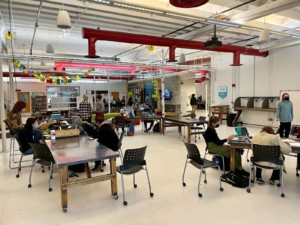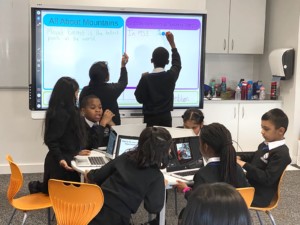Blended Restarts
There are about 10,000 really bad schools in America. The majority are elementary schools. We know how to make them better, but it takes political will and capacity to improve them. We know less about turning around bad secondary schools. The one thing wrong with them is everything. That makes fixing them really hard.
Here’s the best three school turnaround strategies:
- Trade bad seats for good seats: closing bad schools and opening good schools in roughly the same proportion and location. This approach give lots of flexibility to new school developers like KIPP or Achievement First to open where, how, when is best for them. The bad news is that strategy is disruptive to families because it’s hard to coordinate openings and closings and it requires changing schools. New York City is the best example of closing bad schools and opening good schools; it is difficult and contentious but it helps that there is good public transit and full choice.
- Close & replace failing schools: The second best strategy is to close bad schools and replace them with good schools (same kids, same building). Green Dot’s takeover at Locke High School in LA is the most visible example, but this has been happening successfully in New York since Julia Richmond High School was replaced by four new schools in 1993. However, there are as many weak examples as moderately good example. I don’t think any replacement examples are as good a new schools by a quality provider.
- Turnarounds: The third best strategy is to try to turn around bad schools. This is really hard especially at the high school level—there is so much to fix in a big bad school. A couple providers have tried (e.g., IRRE, Talent Development, America’s Choice) with modest success. MLA Partner Schools took over Manuel Arts and is building a Promise Neighborhood in west LA—it will get better but it will take time. Unless there is the opportunity to change fundamental conditions (structure, staffing, schedule, and leadership) there’s little hope of more than incremental improvement.
The big federal grant programs (RttT, School Improvement) don’t give much credence to a systemic reform strategy like trading bad seats for good seats. The grant programs are specific about actions at individual schools. That will force a lot of close/replace (called restarts in the SIG grants) and turnaround attempts.
If restarts are the best grant supported option, the next problem we need to deal with is capacity. There are about 80 charter developers that can open 200 schools per year. Even if they could open 300 schools a year that’s hundreds short of what’s needed to replace the thousands of failing schools. And most of charter operators focus on urban center, what do we do about failing rural schools?
The answer to the turnaround capacity and rural question is blended restart charter management organizations (BRCMO) that combine the best of online and onsite learning. Most of these blended schools would use an online curriculum as core and would supplement with projects, community connections, tutoring, guidance and extra-curricular activities.. Here’s five reasons that BRCMOs make sense:
- Capacity. The big virtual providers (K12, Connections, Insight, KCDL, Apex, Kaplan) offer comprehensive curriculum and have lots of instructional capacity. Add about 30 state virtual schools and dozens of virtual district, contract and charter schools and you get enough capacity to teach about 3 million kids (they collectively serve about 2 million kids full and part time today).
- Interest. Most of the big guys see learning at home capping out at less than 10% and know the bulk of the market will be blended. Some of them will open online/onsite hybrids next fall.
- Less dependent on local teacher. In rural settings it will be very difficult to comply with the Department’s guidelines for replacing half of the turnaround school staff. A blended restart would complement some the existing staff with effective online teachers and quality curriculum.
- Easier to open. Blended schools are easier to open and can be more flexible in schedule. Mavericks in Education just opened four blended charters in Florida in their first year in operation. AdvancePath can open a school in 45 days when necessary and do it midyear where desirable.
- Scale. BRCMOs would create statewide networks of turnaround schools that in big states could easily include dozens of schools with a common support system. None of the school improvement providers could scale as fast or as large.
State charter school authorization processes are not well suited to BRCMOs. Other than Arizona, they don’t allow private providers to apply. Most discourage multiple applications. All require a drawn out application process (like 18 months). For the purposes of RttT and SIG supported efforts, states will need a streamlined restart process.
Despite all of these challenges, BRCMOs could open 100 schools in September 2010 and more than 200 in September 2011. BRCMOs will be a big part of the turnaround solution if states make it happen.








john thompson
I'd like to pick your brain further.
The RttT guidelines don't seem to allow closing schools and presumably swapping seats like you describe, except in extenuating circumstances like being a rural school. In my city, we are maxed out on charters. Would that count as an exceptional circumstance?
RttT is supposed to include unions. But when most of the 5% of the toughest schools are in the one or two urban areas, systemic reconstritution would be a mortal threat to unions. (our union represents the city, while the NEA is stronger in the subburbs where they aren't at risk.)
Also, why not limit the RttT turnaround requirements to elementary? Why go down the road towards mandates for secondary schools when we know almost nothing about improving them as opposed to improving schools that cream?
This is especially true in my city where more than a third of schools are selective charters or magnets, and they are disproportionately in secondary schools. I can't imagine many charter operators wanting to take on the challenge of my school after the more easily educated students have been creamed off.
Replies
Tom Vander Ark
It's the School Improvement Grants that require school specific intervention.
I think you'll see RttT reward statewide systemic reforms not just checkbox responses.
RttT is (in part) an opt in approach. I've seen a number of states slow down aggressive accountability measures to build more support--something that will have long term benefit. CO has probably done more RttT outreach than other states.